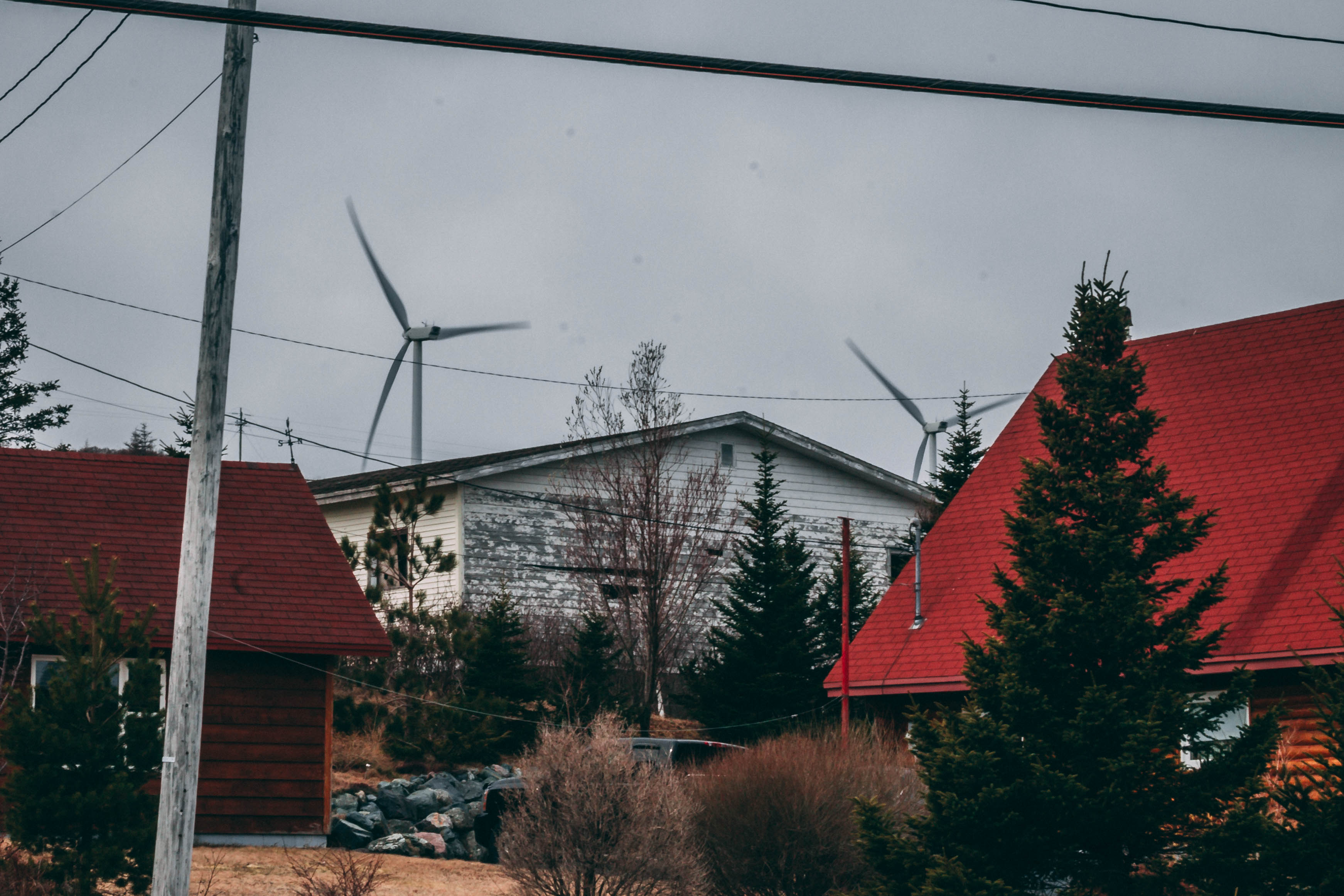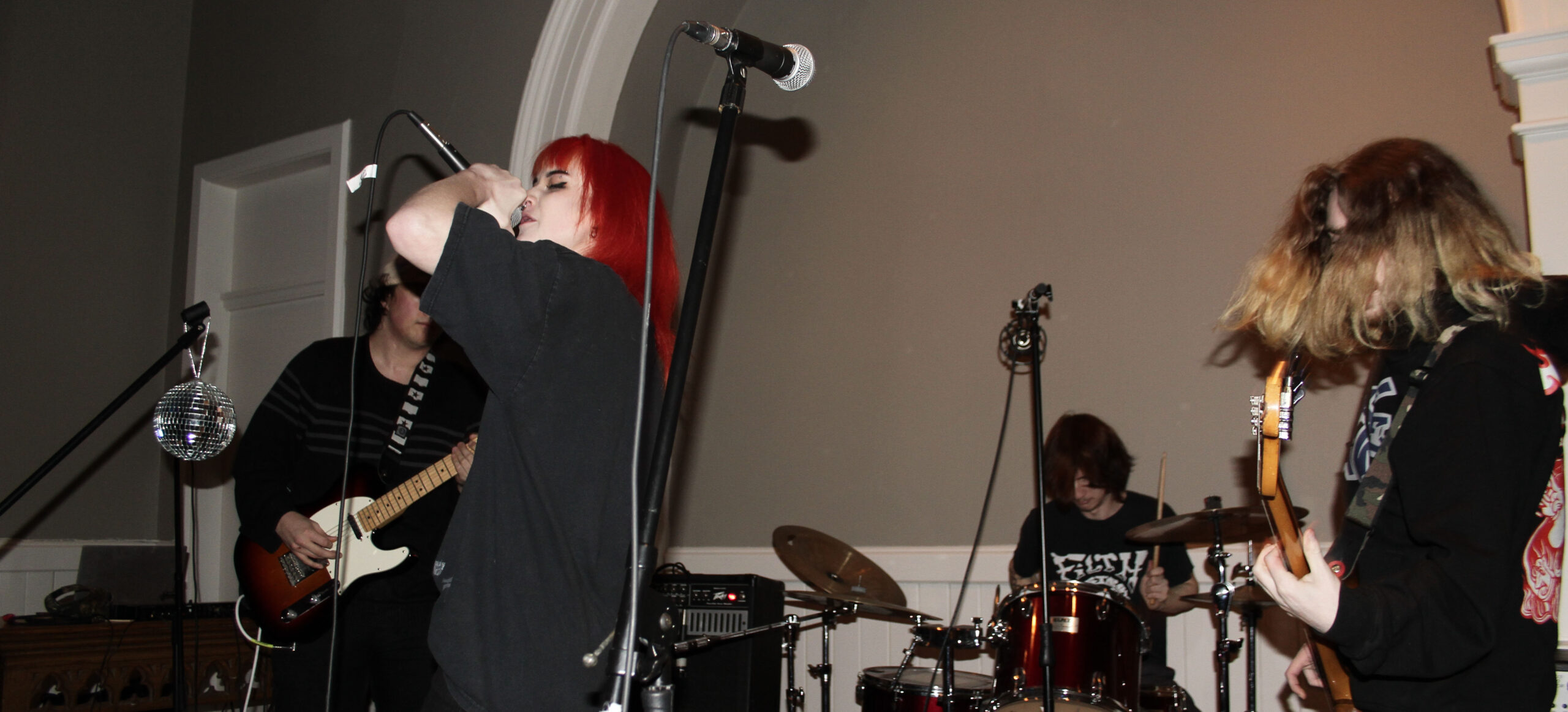‘Even though we’re a relatively small province, we are a major contributor to global climate change.’
Margaret Harvey
Kicker

The province of Newfoundland and Labrador shows a large potential to produce sustainable wind energy. However, with Muskrat Falls, Churchill Falls, and the Bay D’espoir Generating Facility, the need for it is no more.
Nick Mercer is a doctoral candidate at the University of Waterloo, studying sustainable energy, diesel dependence, and more.
“Newfoundland and Labrador is among the windiest jurisdictions in North America,” he said. “Memorial [University] released a paper years ago, that said if you were to convert just the island of Newfoundland into a wind farm, the province would be capable of producing 117 times the amount of electricity it consumes.”
Although Mercer doesn’t advocate for turning the entire island into a wind farm, he said “there’s big potential.”
Of course, the idea of wind energy in the province is not new. There are currently three wind farms in the province. There’s one in St. Lawrence, one in Fermuse, and one in Ramea.
They are privately owned and were already in use before Bill 61, a bill to amend the Electrical Power Control Act, was put into effect.
“Back in 2010, the province passed a bill once they sanctioned Muskrat Falls; which gave an exclusive right to the existing utilities – so that’s Nalcor and NL Hydro – to be the only companies in the province that are allowed to own, distribute, sell, transmit, think about, dream about, imagine, or do anything related to renewable energy in the province,” Mercer said.
“The way I like to characterize the legislation is that renewable energy development by private sector actors or by communities or by indigenous government is essentially against the law in Newfoundland and Labrador,” he added.
Since the legislation passed, Nalcor has attempted to produce renewable wind energy. The crown cooperation built three wind turbines in Ramea that added on to the six that were already built in the community.

Note: This legislation could change as a new government enters power. A provincial government representative said the bill could change as a result of elections and the potential change of government.
However, this time last year, CBC released an article about Nalcor’s three wind turbines. In the article, the Ramea Deputy Mayor, Lester Gould, said the turbines were hardly active.
Now, the Nalcor project has been scrapped.
Clyde Dominie is the current mayor of Ramea.
He said six of the nine wind turbines are privately owned by a company called Frontier Power Systems in PEI and the remaining three were Nalcor’s.
“There were three windmills that were part of an experimental project with NL Hydro through Nalcor combining diesel and wind,” Dominie said.
In a statement from Nalcor, the project was initially focused on renewable energy generation, storage, and grid integration in an isolated, diesel-powered community.
Nalcor stopped using the wind turbines after their experiment was discontinued this past winter. Dominie said that the issue with the experiment was that the technology to produce and store energy when no wind was present was still “15 years away.”
Karen O’Neill, a spokesperson for Nalcor, has confirmed that the project has been scrapped.
“Basically, it is not proceeding,” she said. “It was a [research and development] project and it has come to a close.”
There is currently a proposal in for the PEI company to take ownership of the three turbines that are not currently in use so that they can utilize them.
Oil versus renewable versus sustainable energy
The province of Newfoundland and Labrador currently relies on oil for 15-30% of its electricity on an annual basis. That figure can rise to as high as 35% when the province is in a period of peak demand, like the depths of winter.
The province also recently announced they plan on doubling the amount of offshore oil production by 2030.
“That means that every single year, the province emits over a million tons of greenhouse gas emissions – a megaton of greenhouse gas emissions from Holyrood,” Mercer said.
But the plant is also emitting 11,000 tons of sulphur dioxide – a contributor to acid rain.
“So even though we’re a relatively small province, we are a major contributor to global climate change via greenhouse gases from Holyrood,” Mercer said.
This could be considered a red flag in Canada’s fight against climate change as Canada is a member of the Paris Agreement. The Paris Agreement is an international agreement aimed at reducing global emissions by 30% by the year 2030.
In 2017, power rates for Muskrat Falls were predicted to be approximately 23 cents per kilowatt-hour. This has since been expected to change to 13.5 cents due to the Liberal government’s rate mitigation plan.

If the prices of Muskrat Falls and the Holyrood oil plant, currently at 12-19 cents per kilowatt-hour, were compared to the prices of wind energy, we would see a fair bit of a difference. Prices of wind produced energy in the province are currently seven cents per kilowatt-hour and have been seen as low as four and a half cents per kilowatt-hour.
“So, wind energy is much, much cheaper than other alternatives in the province,” Mercer said.
Mercer believes that the province hasn’t been considering wind energy because of preoccupation with the energy status quo.
“The province has a long history of building large scale hydro-electric dams,” he started. “So, you have Upper Churchill Falls, Bay D’espoir on the island, and now you have Muskrat Falls currently under development.”
“Now that the province has decided to build Muskrat Falls, we simply don’t need any more energy ourselves. Our domestic needs are met. With the completion of Muskrat Falls, when Churchill Falls finally returns to the province’s control, we will be flushed with electricity. So why would you build wind turbines or solar panels if you don’t need the energy on the island or in Labrador?”
Mercer said that the province could build a wind farm for the purpose of exporting energy to places like Nova Scotia, New Brunswick, Quebec, or the North Eastern United States, but it isn’t practical. Newfoundland is an island and it’s expensive to build transmission capacity, he said.
“Because the province built Muskrat Falls, they’ve kind of tied their hands for the future of renewable energy in the province.”
However, Muskrat Falls is considered renewable energy. As long as water flows in the river, it will produce electricity. Water is a renewable resource.
Nalcor said that once the Muskrat Falls project is complete, the province will be running on 98% renewable energy. This renewable energy is mostly from hydro-electric dams like Muskrat Falls, Churchill Falls, and Bay D’espoir.
Mercer said he would argue that there’s a difference between renewable energy and sustainable energy.
Both are sources of energy that are not depleted when used, however “[sustainable energy] also doesn’t have those ecological and social impacts,” Mercer said. “It doesn’t flood land; it doesn’t cause methyl mercury contamination; it doesn’t lead to the loss of traditional foods for the Innu and Inuit in Labrador.”
Essentially, Mercer said producing sustainable energy doesn’t harm the planet, like the way producing renewable energy can.
The province of Newfoundland and Labrador ranks “dead last” amongst all of the other provinces in the country with installed wind energy, even though Newfoundland and Labrador has the strongest winds in North America.
“In total, Canada has over 10,000 megawatts of installed wind energy capacity and Newfoundland and Labrador represents 55 megawatts of that capacity,” Mercer said.
Mercer adds that the two largest contributors of emissions in the province are transportation emissions such as residential vehicles and shipping freight, and offshore oil and gas development.
He said that if the province were to cut emissions by any rates, those are the two economic sectors he would recommend be targeted. However, the policy decision-makers may not want to change. Elections could impact the decisions government makes moving forward.
“If [Nalcor is] here to provide least cost reliable service to customers, we will find the least cost way to provide energy. But if the province says ‘nope, we want renewable and it doesn’t matter the cost,’ well then, we’ll do that. We’ll work with the policy decision makers.”
He also said that if the public wanted to pursue cutting greenhouse gas emissions in an individual manner, they could go about using an electric vehicle, or actively transporting themselves, like commuting with a bike or walking.
“By developing renewable resources at a household level, by improving the way we move ourselves around the province, I really think we can put a dent in the amount of greenhouse gasses we’re emitting.”




Be the first to comment